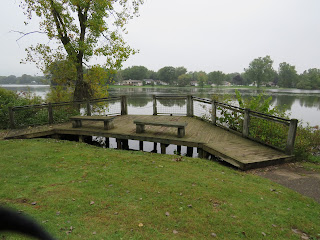The morning temperature is in the mid 40’s, sun is shining and the wind is blustery as I make my way into the Maple River State Game Area, two miles northeast of the village of Maple Rapids. Almost 10,000 acres, this state land surrounds the Maple River as it flows through Gratiot, Clinton and Ionia Counties, including the expansive wetlands wildlife refuge transected by US 127. I’m hiking due south on a 50-ft wide easement covering a pipeline that’s pumping oil from Alma south under the Maple River to Lansing and beyond (red line on map). Out of sight and out of mind to most of the public, the pipeline under my feet brings back memories of the oil spill that occurred in 2010 when a pipeline like this burst and flowed into Talmadge Creek, a tributary of the Kalamazoo River resulting in one of the largest inland oil spills in U.S. history (stock photo), upending the lives of those living near the river and devastating the ecosystem. Glancing skyward, I pause to watch the wind rustle the leaves of thinning birch trees. Along the edge of the easement, I spot the bright red hips of Multiflora Rose and a Mullein rosette. Mullein is known for the softness of its leaves, which are known locally as "bunny ears" or "flannel leaf." The leaves' softness is created by a dense pattern of short hairs that cover both the upper and lower surfaces. Approaching the main channel of the Maple River, I come up short, as the flats are flooded due to above average fall rainfall. This river is a 75 mile-long tributary of the Grand River (stock photo) that originates from the Maple Swamp drain southeast of Owosso. Unlike the Chippewa and Pine Rivers that flow eastward, this river flows west. After passing the village of Ovid it flows northwest past Elsie and then turns southwest into the State Game Area, past Maple Rapids before emptying into the Grand River at the village of Muir, 12 miles north of Portland. Exploring the edge of one section of the flats, I notice the leaf litter consists mostly of Silver maple and hickory while another section, a variety of oaks and yet another section, beech and maple with a few tiny lavender flowers of Heal-All sprinkled in. Turning west, I follow a groomed muddy trail used by lots of deer. Turning around, I retrace my steps back toward the car where I see a couple of dipterans warming themselves on a log, including a Green Bottle fly and a Housefly. Finally, I’m back in the car for my 22-mile trip back to Alma.
Leaves of fall or flowers of spring
Bird’s feather or butterfly’s wing
Skin of a snake or hide of a deer
Snow that’s fresh or sky that’s clear
Grass in a field or soil on the ground
Seeds that fly or fruit that’s round
Lichens on trunks or needles of pine
Dark clouds or bright sunshine
Mother Nature’s shades and hues
Favorite colors, hard to choose
D. DeGraaf



